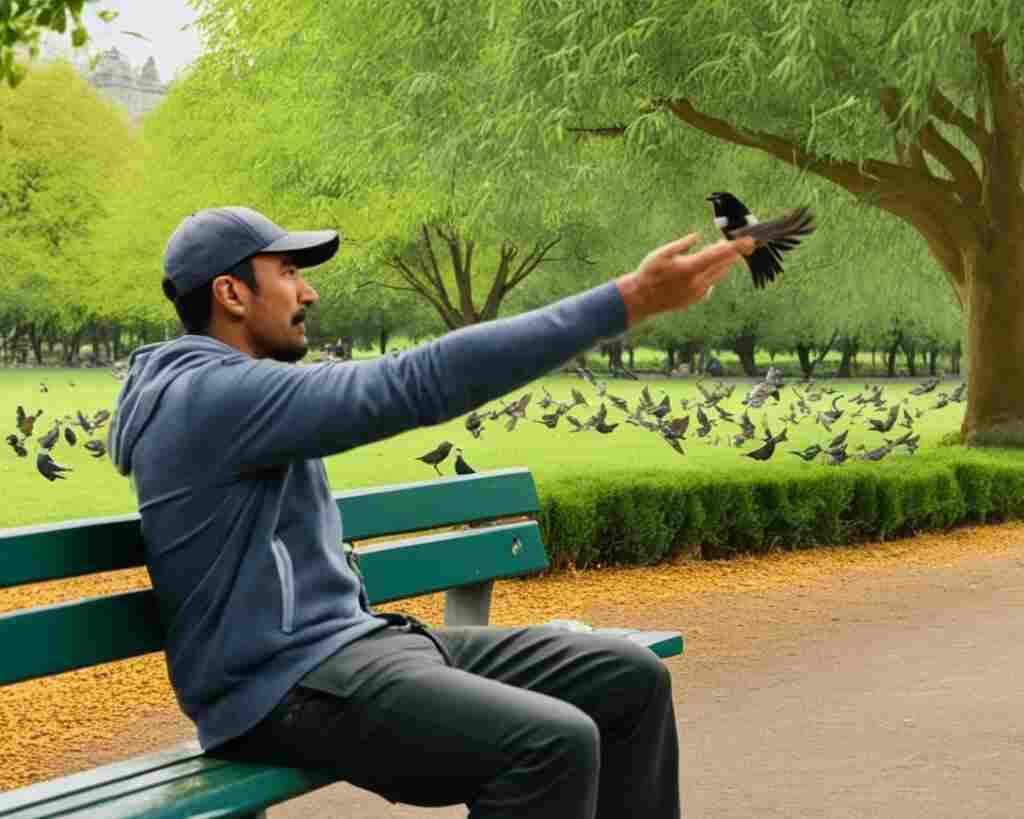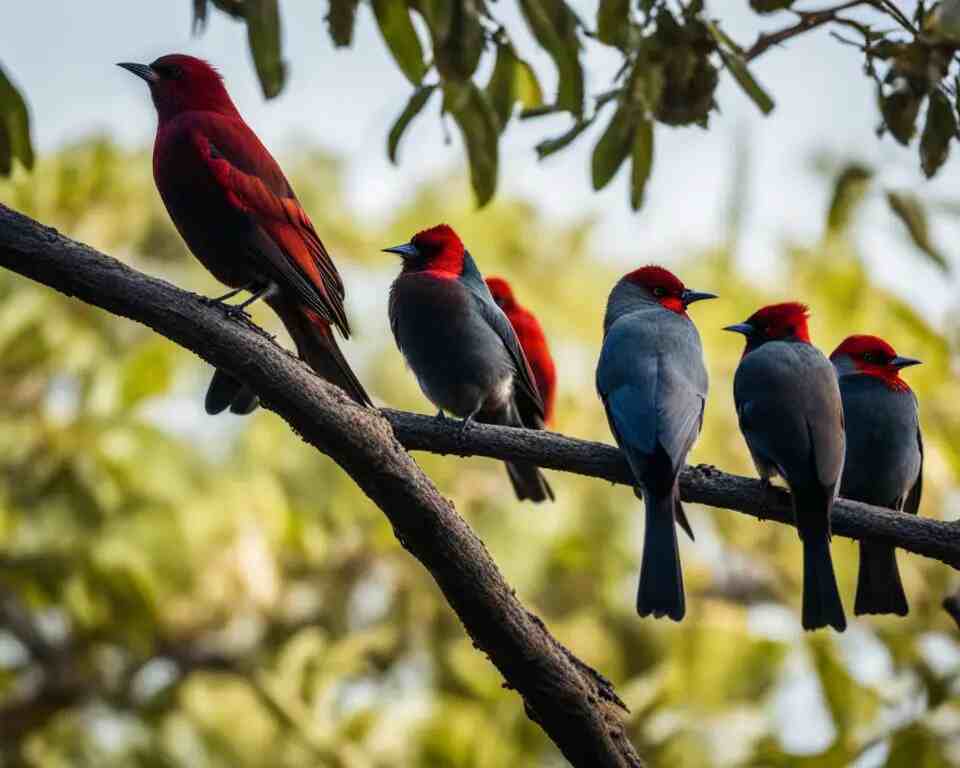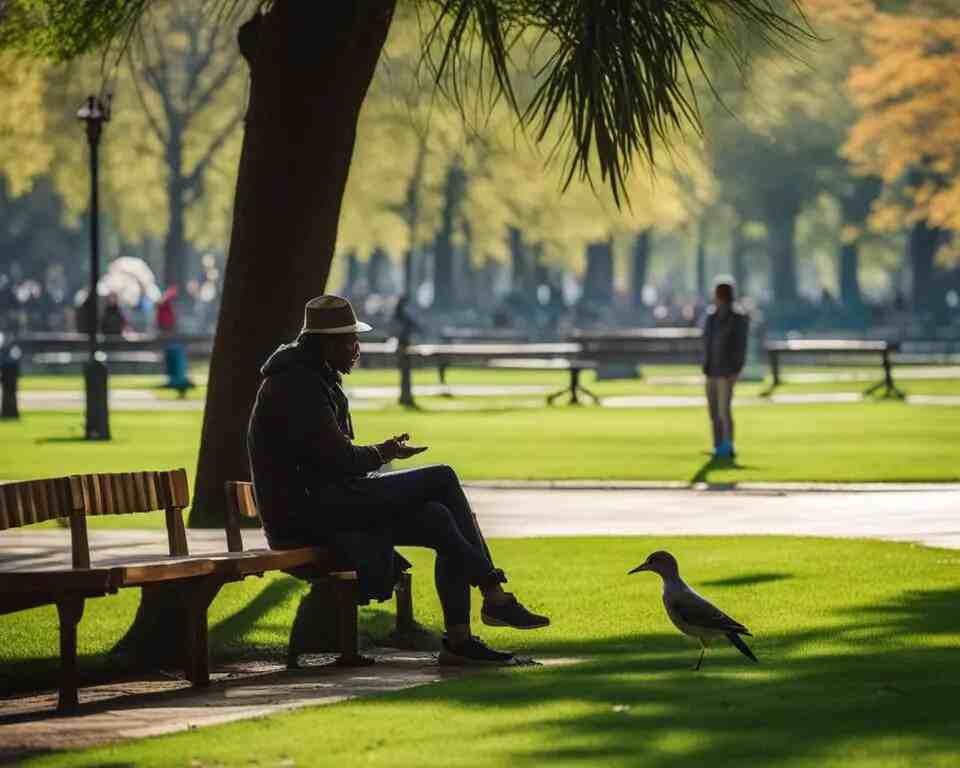As someone who loves watching birds, I’ve always been curious: Do wild birds recognize people, and if so, how do they manage it? Recent studies show that birds not only remember human faces but also get to know our voices. They use their sharp senses of sight and hearing to identify and locate people, especially those who are kind and regularly provide food.
Placing visible and clean feeders helps birds recognize us, showcasing their incredible ability to find reliable food sources even when facing temporary shortages. The way birds perceive things is truly fascinating!
Table of Contents
- 1 Key Takeaways:
- 2 Do Wild Birds Recognize People?
- 3 Witnessing Avian Recognition: Personal Encounters and Indoor Observations
- 4 Scientific Research on Bird Cognition and Human Recognition
- 5 Creating a Haven for Feathered Friends
- 6 Understanding the Boundaries: Wild versus Domesticated Interaction
- 7 Building Trust with Our Winged Neighbors
- 8 Conclusion
- 9 Source Links
- 10 Author
Key Takeaways:
- Wild birds can recognize humans and may remember their faces and voices.
- Kindness and regularity in feedings help birds associate individuals with reliable food sources.
- Birds rely on their keen senses of sight and hearing to locate feeders and identify humans.
- Placing feeders in visible areas and keeping them clean aids in bird recognition and location of food sources.
- Birds can find alternative food sources if the feeder is temporarily empty.
Do Wild Birds Recognize People?
Wild birds do recognize people through sight and sound. Recent studies show they remember faces and associate humans with food, enhancing recognition. Birds rely on keen senses, such as hearing and vision, to identify individuals, showcasing remarkable cognitive abilities.
Witnessing Avian Recognition: Personal Encounters and Indoor Observations
When it comes to bird cognition and bird-human relationships, personal encounters can offer fascinating insights into the recognition abilities of our feathered friends. Observations of birds recognizing familiar faces and voices have been documented, shedding light on the depth of their perception.
Some bird species, such as crows, pigeons, and magpies, are known for their facial recognition skills. These intelligent birds can remember specific actions associated with certain individuals, displaying a level of cognitive recognition that goes beyond mere visual perception.
Indoor observations can also provide valuable information about how birds respond to different humans in their environment. By closely observing their behavior and interactions, we can gain a deeper understanding of the intricacies of bird cognition and the complexities of bird-human relationships.
Scientific Research on Bird Cognition and Human Recognition
Scientific studies have delved into the fascinating realm of bird cognition and their ability to recognize humans. Birds possess remarkable perceptual abilities and exhibit complex behaviors in their interactions with humans. Understanding the dynamics of bird cognition and human recognition can shed light on the intricate relationship between these two species.
The Study of Pigeons: Facial Recognition Capabilities
Pigeons, known for their exceptional cognitive skills, have demonstrated the ability to discriminate between familiar and unfamiliar faces. In controlled experiments, pigeons have shown a remarkable aptitude for facial recognition, akin to that observed in primates. These findings provide compelling evidence of birds’ cognitive capabilities and their capacity to recognize human faces.
Understanding Magpies: Memory and Retribution
Magpies, known for their intelligence and resourcefulness, have been the subject of research exploring their memory and recognition of individuals. Studies have revealed that magpies can remember specific individuals and their actions, showcasing their ability to form long-lasting associations. This memory extends to recognizing familiar humans and responding accordingly, reflecting the intricacies of their social cognition.
Carrion Crows and Vocal Discrimination
Research on carrion crows has highlighted their remarkable vocal discrimination abilities. These birds can differentiate between familiar and unfamiliar human voices and calls, showcasing their acute auditory perception. Their vocal discrimination skills further reinforce the extent of avian cognition and their ability to recognize and distinguish human stimuli.
Creating a Haven for Feathered Friends
In order to enhance bird-human interactions and attract a variety of bird species, it is important to create a bird-friendly environment in your yard. By optimizing your yard space and incorporating bird-friendly features, you can provide a welcoming sanctuary for our feathered friends. Here are some tips to help you make your yard a haven for birds:
Optimizing Your Yard for Bird Attraction
When it comes to attracting birds to your yard, it’s all about creating an environment that meets their needs. Here are a few ways to optimize your yard space:
- Plant native vegetation: Native plants provide food in the form of fruits, seeds, and nectar, while also offering shelter and nesting sites for birds.
- Create different habitat zones: Include a variety of vegetation types, such as trees, shrubs, and grasses, to mimic natural habitats and attract different bird species.
- Provide water sources: Birds need access to fresh water for drinking and bathing. Install a birdbath or a shallow water feature in your yard.
- Limit pesticide use: Avoid using pesticides that can harm birds and their food sources. Opt for natural pest control methods instead.
By following these guidelines, you can create a yard that is not only attractive to birds but also a sustainable and environmentally friendly space.
Bird-Friendly Features: From Feeders to Fountains
Providing specific bird-friendly features in your yard can greatly enhance bird-human interactions. Here are some features to consider:
- Bird feeders: Install bird feeders in visible areas of your yard and keep them stocked with a variety of bird-friendly foods. This will attract birds and also help them recognize your yard as a reliable food source.
- Nest boxes: Place nest boxes in suitable locations to provide safe nesting sites for birds. Different bird species have different requirements, so make sure to research the specific needs of the birds in your area.
- Native plants: As mentioned earlier, planting native vegetation supports bird populations. Choose plants that provide food, shelter, and nesting opportunities for birds.
- Water features: In addition to a birdbath, consider adding a small fountain or pond to your yard. The sound and movement of water can be attractive to birds and also provide a water source.
Creating a haven for birds in your yard not only benefits the birds themselves but also allows you to enjoy the beauty and wonder of these winged creatures up close. By optimizing your yard for bird attraction and incorporating bird-friendly features, you can foster a deeper connection between humans and birds, promoting a harmonious coexistence.
Understanding the Boundaries: Wild versus Domesticated Interaction
When it comes to bird-human interactions, it is essential to differentiate between wild and domesticated bird encounters. Wild birds, living in their natural habitats, may exhibit different behaviors and responses compared to pet or captive birds. Understanding these distinctions is crucial for establishing respectful and non-intrusive relationships with wild birds.
Wild birds have evolved to navigate their environments independently and rely on their instincts to survive. They may exhibit behaviors such as cautiousness, wariness, or flight when approached by humans. It’s important to respect their boundaries and avoid any actions that may cause distress or harm.
Observing wild birds from a distance and allowing them to engage with their natural behaviors is the key to a positive bird-human relationship. By understanding and observing these natural boundaries, we can promote mutual respect and create a safe and comfortable environment for both birds and humans.
Building Trust with Our Winged Neighbors
Communication: Vocalizations and Body Language
Effective communication is essential in building trust with wild birds. Birds have their unique ways of communicating with humans, using vocalizations and body language to convey their intentions. By paying attention to their signals, we can better understand their needs and respond appropriately, strengthening our relationships with these remarkable creatures.
Wild birds use various vocalizations, including chirps, tweets, songs, and calls, to express different messages. Each species has its own distinct vocal repertoire, with specific sounds signifying alarm, attraction, aggression, or territorial defense. By familiarizing ourselves with these vocalizations, we can decode the messages they convey and adapt our behavior accordingly. For instance, if a bird is giving an alarm call, it may be indicating a potential threat nearby, and we can respond by remaining still or taking cautionary measures to help alleviate their concerns.
In addition to vocalizations, birds also utilize body language to communicate with humans. They may puff out their feathers, raise their crests, or change their posture to express their emotions or intentions. For example, a relaxed and perched position indicates a state of contentment, while a fluffed-up appearance may signal discomfort or cold weather adaptation. Understanding these body language cues allows us to gauge the bird’s comfort level and adjust our behavior accordingly to ensure a positive interaction.
By being mindful of bird vocalizations and body language, we can lay the foundation for trust and mutual understanding. Responsive and respectful communication helps bridge the gap between humans and birds, fostering a connection built on trust and empathy.
Steps Toward Fostering a Bird-Human Relationship
Building trust with wild birds requires time, patience, and consistent effort. Here are some steps you can take to foster a strong and positive bird-human relationship:
- Provide a reliable food source: Regularly supplying feeders with bird-friendly and nutritious food helps birds recognize your yard as a dependable food source. Ensure the feeders are clean and replenished to maintain their trust and support their well-being.
- Establish a consistent routine: Birds appreciate predictability and routine. Set a regular feeding schedule and follow it consistently to create a sense of reliability and familiarity. This consistency reinforces their recognition and trust in your presence.
- Practice positive reinforcement: Birds associate positive experiences with specific individuals. Reward their presence with soft-spoken words, gentle gestures, or treats when appropriate. This positive reinforcement strengthens their trust and encourages continued interaction.
- Respect their space: While birds can become comfortable with human presence, it’s essential to maintain a respectful distance and avoid sudden movements that may startle or disturb them. Give them the freedom to interact with you at their own pace.
- Observe and learn: Spend time observing bird behavior and learning about their preferences. This knowledge allows you to provide an environment that caters to their specific needs, attracting them and fostering a deeper connection.
Taking these steps can help establish a genuine bond between humans and birds, creating a mutually beneficial relationship based on trust, respect, and understanding.
Conclusion
Empowering Avian Welfare: A Journey Beyond Observation
Exploring avian recognition offers valuable insights into bird cognition. Recent studies reveal birds can recognize and familiarize themselves with human voices, particularly when linked to reliable food and water sources. Birds use keen senses to locate feeders and identify humans. Placing visible and clean feeders aids this recognition.
Acknowledging the bird-human connection is crucial for avian welfare. Beyond observation, taking an active role involves providing consistent food sources, maintaining bird-friendly environments, and building trust through effective communication.
Contributing to avian welfare means recognizing the importance of our interactions with wild birds. By fostering positive relationships and creating supportive environments, we deepen our understanding and appreciation for these magnificent creatures. Let’s embark on this journey, ensuring a harmonious coexistence with our avian cohabitants.





